Is downtown Cincinnati safe? Your questions answered
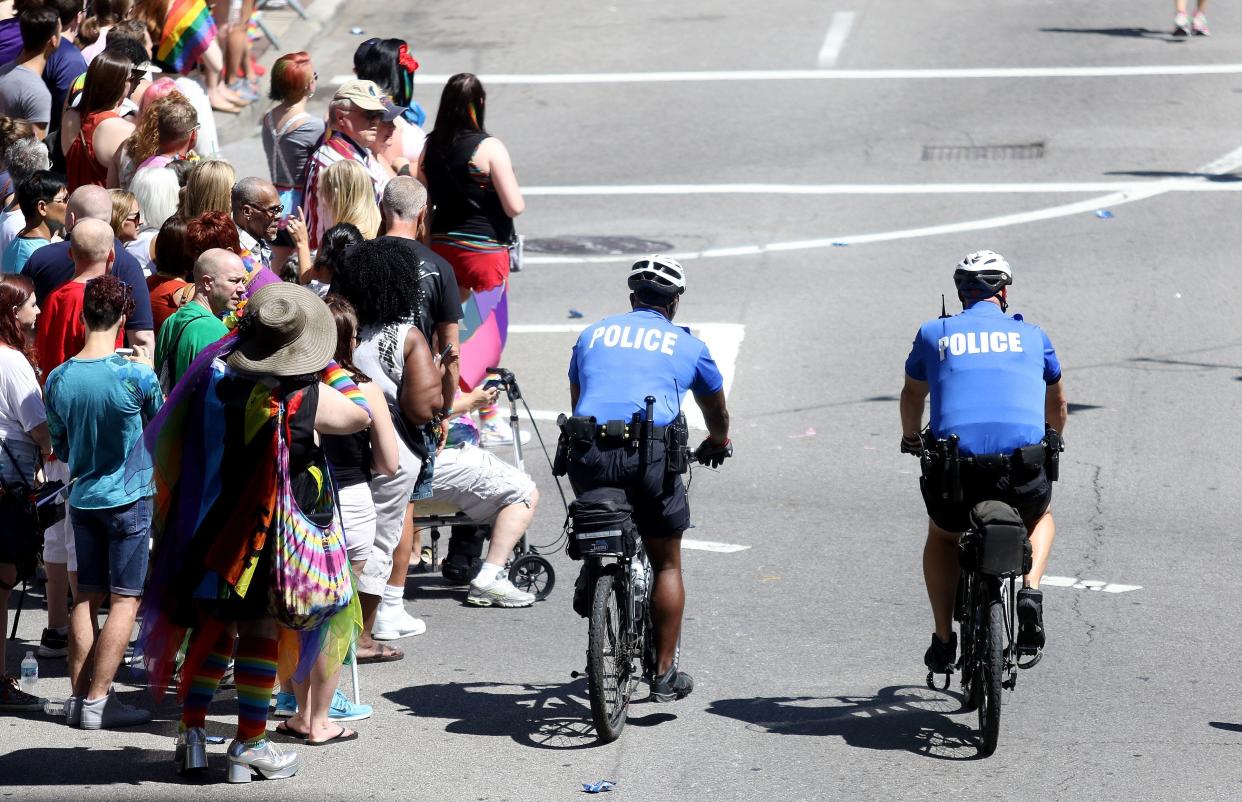
This is part of The Enquirer's Future of Downtown series and part one of a three-part series on crime and safety. Check Cincinnati.com over the next few days for more on auto-related crime and how Cincinnati is tackling homelessness and panhandling.
Whenever we write about Downtown Cincinnati and its future, commenters always raise one topic: safety.
Am I going to get jumped? Can I park my car on the street? What should I do if I encounter panhandling?
As part of our Future of Downtown series, The Enquirer talked to locals, interviewed the police and analyzed crime data to answer the frequent questions and comments we get from readers about living in and visiting Downtown.
Here’s what we found out:
Violent crime in Downtown Cincinnati is low and it isn't random
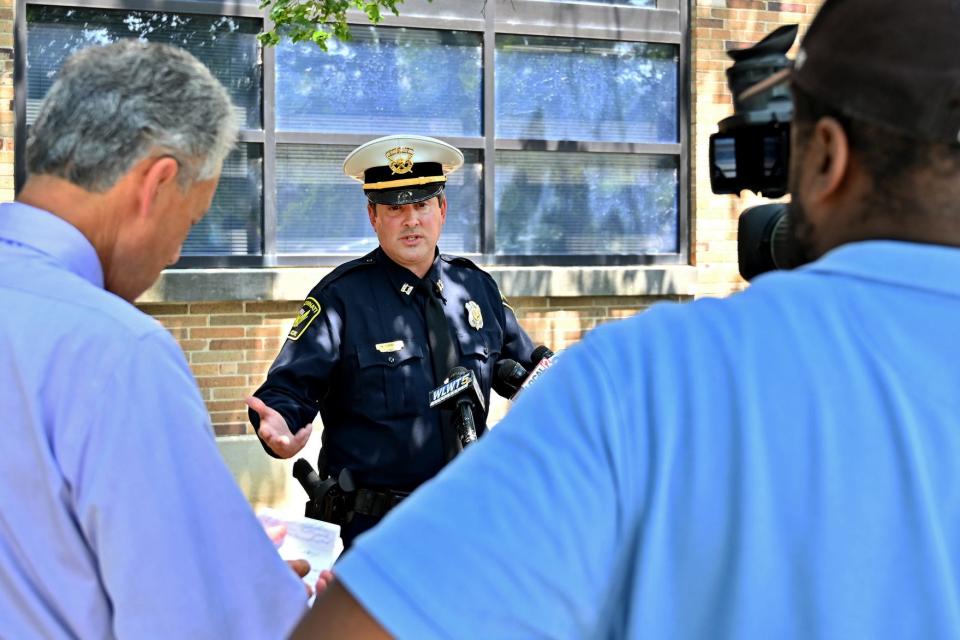
Downtown and citywide data reveal that most people visiting the urban core from the suburbs will not be victims of violent crime. In Cincinnati, the reported victims are more often Black men who know each other between the ages of 18 and 40 (as are those who commit those crimes) and those incidents typically happen outdoors.
Relative to the large number of people who live and spend their time Downtown, "the count of crimes that happen is really, really low," said Cincinnati police Capt. Matthew Hammer. "It's a very small number of our population that are offending."
There's been a massive spike in teen shootings in 2023, but most of those incidents have not occurred Downtown.
Yes, there can be large groups of youth
Some Downtown residents and Greater Cincinnatians alike surveyed by The Enquirer said they worry about Black youth gathering Downtown and what trouble might ensue. But data shows that kids under age 18 aren't typically involved in crime. “I think people forget what it’s like to be a teenager,” City Manager Sheryl Long said. “You forget how important that sense of freedom is you feel in the summer months being able to go Downtown and live your life. There’s nothing wrong with hanging out.”
Still, the city has plans to address the loitering (legally defined as gathering in a public area without a purpose). Long is in talks with Rep. Greg Landsman about how the federal government can help improve safety at Government Square. For example, could the sidewalks surrounding the courthouse and bus depot include more public seating or space for small events?Long also aims to get youth off the streets and into recreation centers across Cincinnati where they’ll have things to do 365 days a year. She’s working with the city’s recreation commission on extending hours and increasing staffing at recreation centers, and she’d like to get Cincinnati Public Schools involved in finding other solutions.
Crime data in Downtown Cincinnati mirrors other U.S. cities
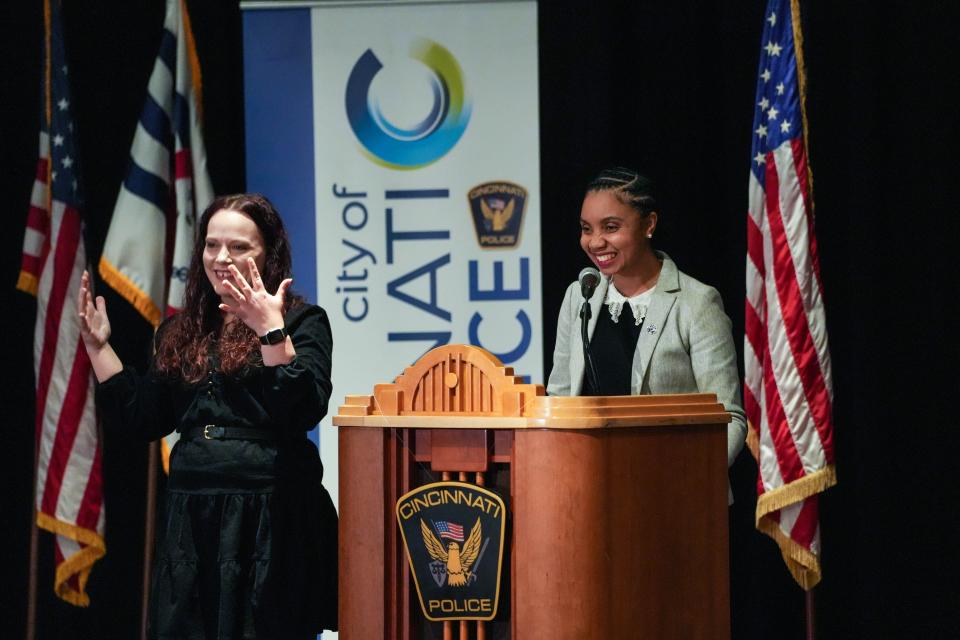
While crime increased across American cities over the course of the pandemic from 2019 to 2022, the nonpartisan Brookings Institute found that the spike in crime committed in America’s downtowns was relatively small compared to the citywide rates. In the city of Chicago, there was a 48% increase in property crime and a 5% increase in violent crime. Downtown Chicago saw just 6% and 1% spikes respectively. Cincinnati was not included in the study.
In the Queen City, violent crime incidents are at their lowest levels in at least a decade.
“For most people, there have been times where they come Downtown and nothing has happened to them,” Long said. “And I will guarantee that the crimes we’re seeing recorded Downtown are the things that the entire country is dealing with. It is not just the city of Cincinnati.”
The busiest spots Downtown are monitored
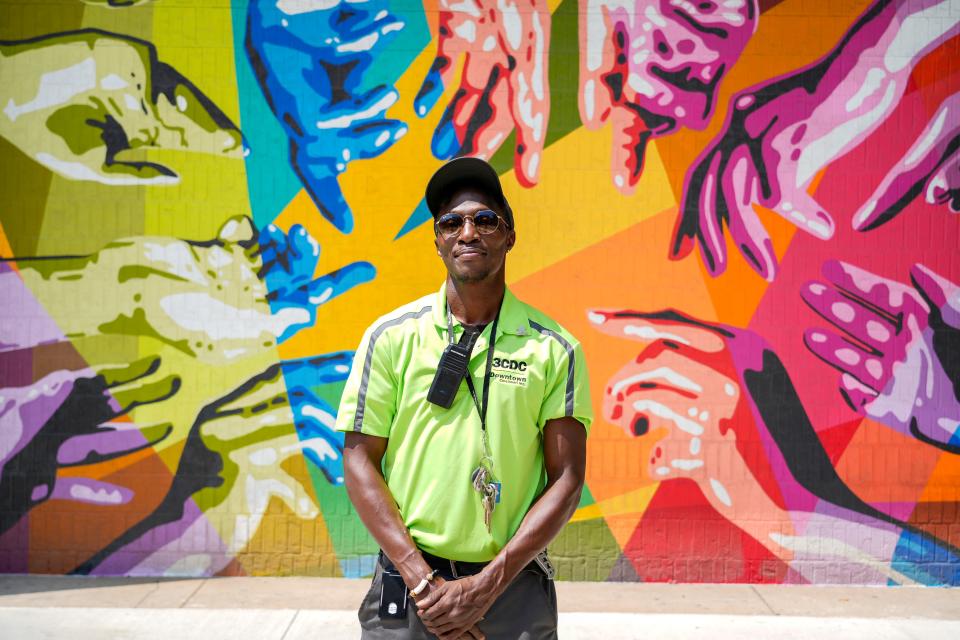
Lashun Woodard, 40, heads up the clean and safety efforts for the Court Street corridor of 3CDC’s downtown ambassador program. He has his eyes on Court Street at all times.
As one of Downtown Cincinnati’s emerging destinations for dining, the former historic strip near Kroger-on-the-Rhine now boasts consistent foot traffic. People are everywhere: grocery shopping, walking to the public library, catching the streetcar or stopping at Cincinnati mainstays like Avril-Bleh Meat Market. Woodard, always found in a signature bright lime-green collared shirt, serves as the intermediary between the local residents, business owners, day-to-day visitors of Court Street, 3CDC and the local police.
“Court Street is like home to me,” Woodard said. “I pretty much know everybody that gets off the bus here or works here and I make sure everything is good.”
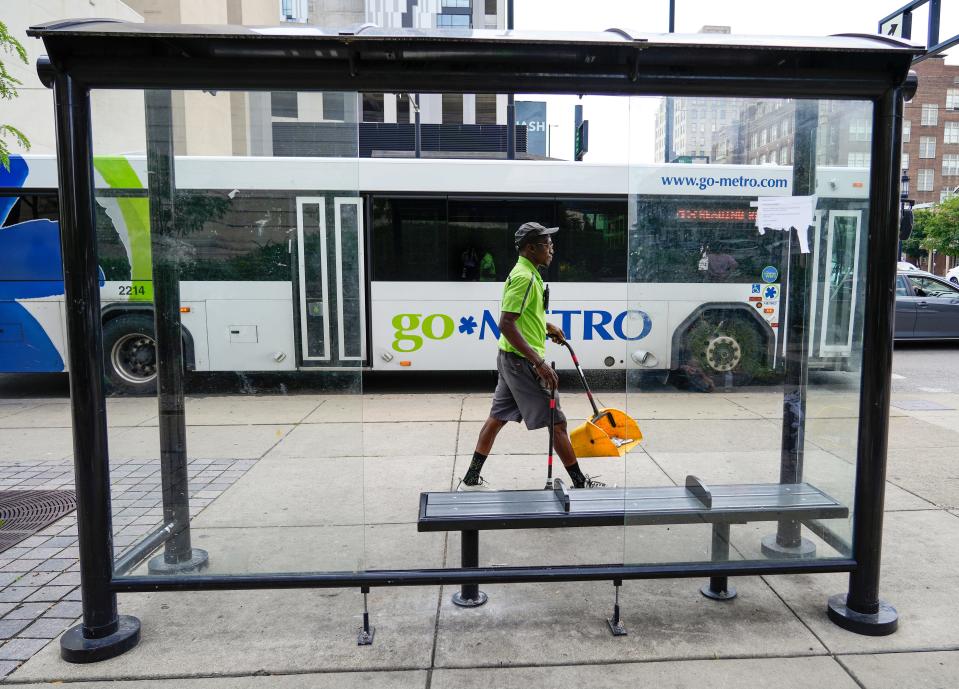
Woodard is one of over 85 ambassador employees who oversee different parts of Downtown Cincinnati and Over-the-Rhine. You’ll see them on the streets 24 hours a day, every day of the week.
Because it's busy, Court Street, along with gathering spots like The Banks and Government Square, located just east of Fountain Square on East Fifth Street, are considered places to watch by both 3CDC and the police district. These are areas where crowds form, fights occasionally start, people without housing hang out or panhandling occurs. Over 40 police officers operate through the central business district, too, and more are hired for special shifts during major events like Reds games and the Taylor Swift concerts. 3CDC hires its own police detail at Fountain Square for events.
"We're hopeful that helps alleviate any fears people might have being downtown," said Capt. Hammer, who oversees the district surrounding Downtown. "The fact that people come here from all over the place is a testament first to how people feel in this city."
“The ultimate way to make a community safe is for more people to be around, for folks to see others on the streets,” added Steve Leeper, 3CDC's president and CEO.
Why you can’t compare safety in Downtown Cincinnati to your neighborhood
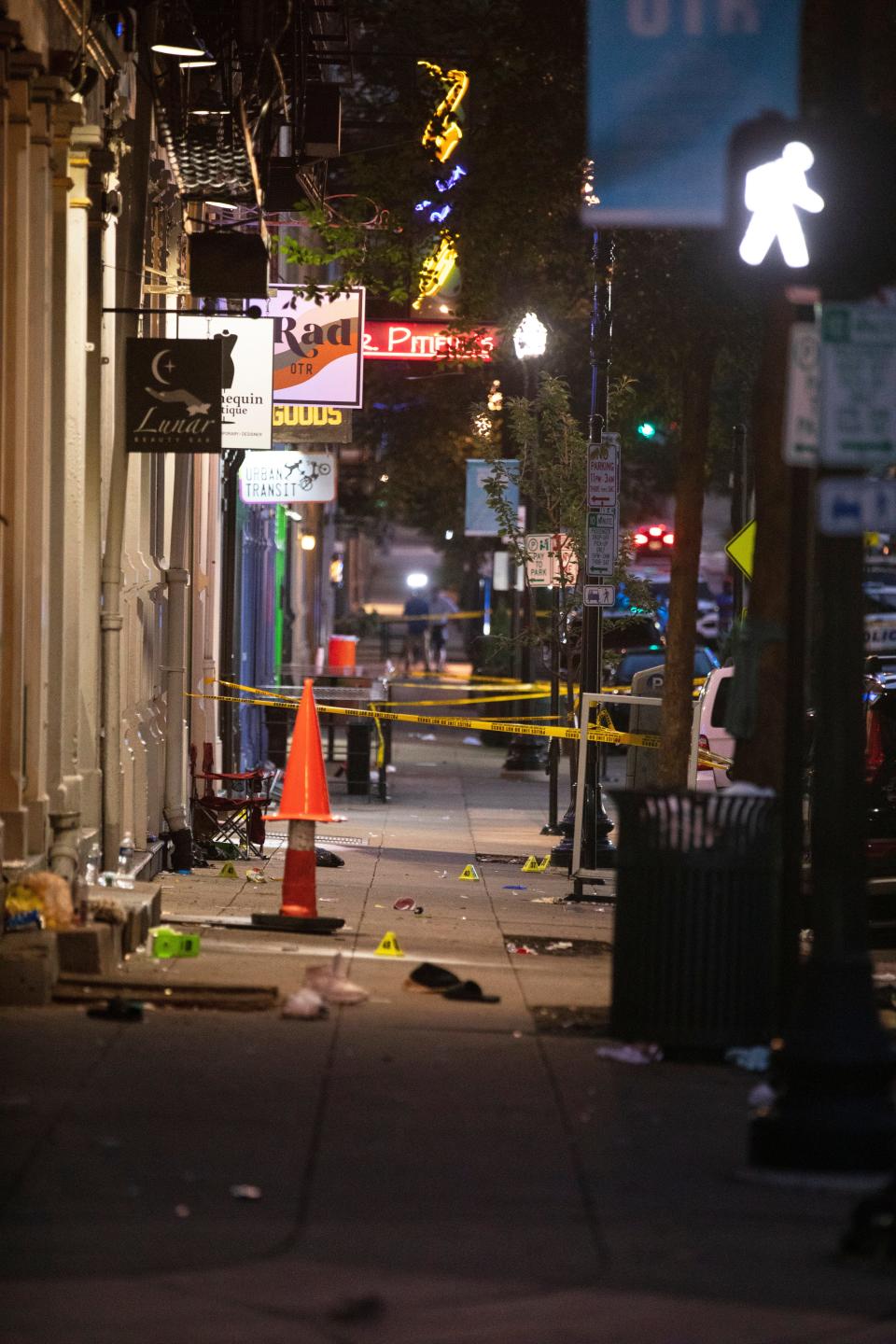
Comparing statistics on crime from neighborhood to neighborhood should largely be based on population size. The only other Cincinnati neighborhood that matches Downtown by size is Over-the-Rhine, with a combined average of 5,728 people. So far this year, there have been 37 violent crimes committed Downtown compared to 82 above Central Parkway, according to reported crime database CincyInsights. Property crime is a bit closer with a reported 349 incidents versus 411 respectively.
Since 2019, gun violence has risen dramatically across the United States and is seen most prevalently in Over-the-Rhine. Over the past four years, 25 people have been killed by homicide in Over-the-Rhine versus six Downtown. While no one was fatally shot, a drive-by shooting near Longfellow Bar on Clay Street in June injured three people, damaged a storefront window, and has caused a stir among the business owners in Over-the-Rhine who want more security.
So far this year, there have been three times more gun-related incidents in Over-the-Rhine and West End − the two neighborhoods with the highest rates − than in Downtown Cincinnati, according to city shootings data.
Downtown resident feels safe, despite what others feared
Patrick and Thiennga Gray moved to the southern edge of Downtown three years ago from East Walnut Hills. Now with a six-month-old daughter in tow, they take to the streets every day for walks and a quick commute to work. Even Patrick’s coworkers who work Downtown with him have questioned his decision to live there, citing fears over safety and affordability. “I’ve never felt the need to exercise any more caution living here,” said Patrick, 33. “In East Walnut, we faced more nefarious types trying to get inside our building and more police were also called to our street there than in Downtown.”
The post-pandemic fear of crime seen across the United States is due in part to media coverage "whether or not crime actually is up in central city business districts," the Brookings Institute wrote. "Unfortunately, many of these aftershocks − such as emptier streets and vacant storefronts − are the very same issues that negatively impact perceptions of safety in the first place."
More people Downtown will make it feel safer
Over 1,000 new apartment units are coming online in the next few years thanks to the series of office-to-condo conversions sweeping the Downtown area. Creating a 24/7 residential community − something Downtown hasn't had in decades − will require expanded retail, restaurant and entertainment options, as well as a more comprehensive approach to preserving safety.
In other words, if people realize Downtown is safe, more of them will move and visit there. Those crowds, in turn, will make Downtown feel safer.
Long wants to work with developers like 3CDC to continue to fill in existing vacant buildings, create development opportunities in all of Downtown's corners and find ways to maximize the use of public spaces.
“When we think about the future of Downtown from a public safety standpoint, we think about where new development needs to be,” she said. “How do we make sure we don’t create a concentration of people in one area? How do we spread out development and be more methodical in our placement of it?
“We are always strategizing and talking about this because trends show that Cincinnati is a place where people want to be.”
This article originally appeared on Cincinnati Enquirer: Downtown Cincinnati crime and safety: What it's really like

